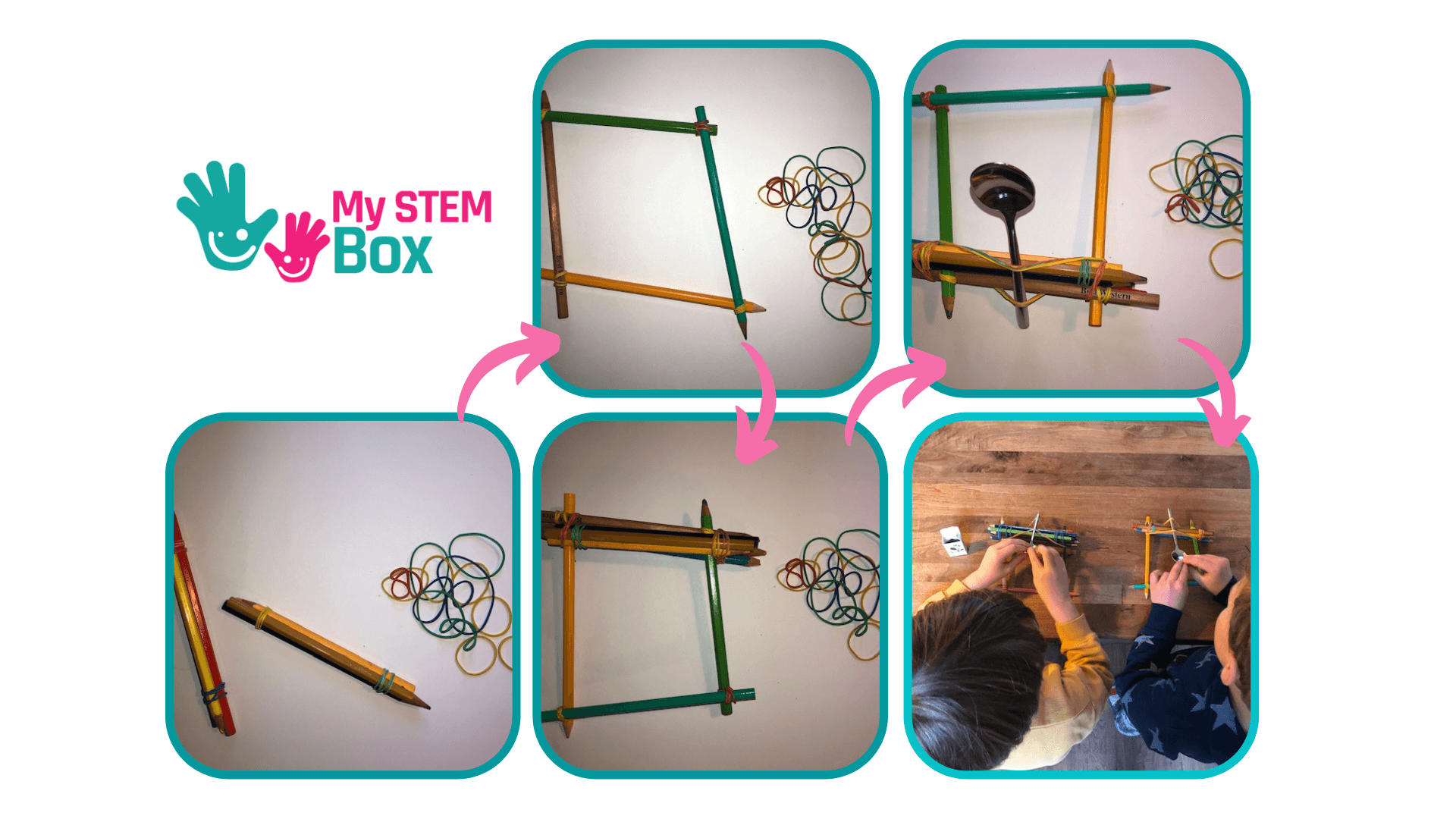So one fine evening, my son and his friend were talking about a game called “The Catapult”. One of the older boys at their school was playing it during breaks. He asked me if he could play the game on my phone, therefore I looked into it and told him: “Why not build and play with a real one?”
Contents
For a moment, the two of them had their mouths agape. But then they were all over me. “Daddy, you gotta show us how to build one.” Well, I guess that’s what dads are for, am I right? Here are a few ways to build popsicle stick catapults!
The Science & a Bit of History Behind Catapults
The ancient Greeks and Indians built catapults around the 5th century BC. Early catapults were just crossbows with a better range. The Romans then went on to increase their size and perfect their design.
Before the invention of gun powder, catapults were the weapon of choice if you wanted to fight from a safe distance. Some armies even used catapults in the First World War!
The catapult is a dynamite of ideas in both science and maths. It demonstrates:
Conservation of Energy
A wound spring (or any other elastic object) carries potential energy, which you can convert into kinetic energy upon release.

Newton’s Laws of Motion
First Law: An object at rest stays at rest. The catapult’s cannonball will not fly until you apply a force on it.
Second Law: The force required to move an object is directly proportional to its mass. A heavier cannonball requires greater power to move and therefore travels a lower distance.
Third Law: Every action has an equal and opposite reaction. When you push down the catapult’s spring, you are exerting a force in the downward direction. Upon release, the spring reacts in the opposite direction flinging the cannonball upwards.
Gravity
Gravitation is a downward force acting upon the cannonball, which causes a uniform downward component of acceleration in it. Because of this, the ball follows a parabolic path before coming back to the ground.
Popsicle Stick Catapult Idea 1
What You Need:
- 10 popsicle sticks (or wooden pencils if you are out of popsicle sticks)
- A spoon
- Lots of rubber bands
- A small table tennis ball, pom-poms, or any other small round object that you might like to fling around

Steps To Follow:
- Step 1: Take eight popsicle sticks together, lay them out horizontally, and tie both ends of the group tightly with rubber bands.
- Step 2: Take two more popsicle sticks, and tie them together with rubber bands. But this time, only tie one end and leave the other end open.
- Step 3: Fit the stack of eight sticks that you made earlier in the gap between the two sticks you wound together in step 2.
- Step 4: Take a plastic spoon and tie it using rubber bands to one of the two-popsicle-assembly you made in step 2.
- Step 5: Place the ball or pom-pom on the spoon.
- Step 6: Push the spoon down with your finger, and then release.
- Step 7: Enjoy flinging your popsicle stick cannonballs at various objects (and people) in the room!

PS we also tried wooden pencils instead of popsicle sticks and my son and his friend used dried raisins to fling… it was marvellous!
Popsicle Stick Catapult Idea 2
What You Need:
- 11 popsicle sticks
- A plastic bottle cap
- Some glue
- 16 rubber bands
- A ball or other projectiles
Steps To Follow:
- Step 1: Take two popsicle sticks, and join one end together. Now rotate the two sticks, angled at about a 45-degree relative to each other. Tie a rubber band around the joint end so that the sticks stay in this position. Tip: you have to tie it across the joint, going through both the bottom and the top.
- Step 2: Make a second two-popsicle assembly just like in step 1.
- Step 3: Create a square frame by tying the ends of four popsicle sticks to each other with rubber bands.
- Step 4: Fit the two two-popsicle assemblies that you created in steps 1 and 2 in the square frame so that the frame fits tightly at the open ends. Tie the frame with the two-popsicle assemblies using rubber bands. Make this assembly stand with the closed end of the two popsicle assemblies facing upward.
- Step 5: Place a popsicle stick between the wedge of the two-popsicle assemblies, and tie it there with rubber bands.
- Step 6: Take another popsicle stick, and connect it to the middle part of the two-popsicle assemblies, slanting along with the angle.
- Step 7: Now, take another popsicle stick and glue a plastic bottle cap to one of its ends, to form the arm of your catapult.
- Step 8: Place the open end of the popsicle stick used in step 7 over the stick used in step 6 so that the end with the bottle cap goes behind the stick that you used in step 5 (the one at the top of the catapult). Tie it here using a rubber band.
- Step 9: Now you are ready for some fun! The popsicle stick that you tied to your catapult in step 8 is a movable arm with a place for holding a projectile. You can put anything in it you like and fling it around the room!
Experiments With Your Catapult
After a while, simply flinging things around does not remain as much fun. That’s the time for you to pique your kids’ curiosity with some well-placed questions that teach physics concepts. For example:
Does a Lighter Ball Travel Farther Than a Heavier Object?
Get the kids to try flinging a table tennis ball and then a slightly heavier ball. Compare the distance. The tennis ball will travel farther because of its lower mass. As per Newton’s Second Law, the acceleration produced will have to be higher because the force that you are applying is the same in both cases.
Does the Ball Travel Farther In The First Or The Second Experiment?
Due to the nature of a uniform gravitational force acting downwards, the ball will follow a parabolic path in the air. Interestingly, to maximize the distance, one only needs to launch the ball at a specific angle, 45 degrees (halfway between straight up and straight ahead). That’s why the second catapult flings your cannonballs farther.
This concept is very cool and has applications in sports like baseball and football too. To get the maximum distance when hitting a ball, hitting hard is not enough. You have to hit it so that the ball goes at a 45-degree angle to the playing field.
Similarly, in football, you should always throw a ball at a 45-degree angle to the ground to get the maximum distance.
Wrap Up
Popsicle stick catapults are a fun way of demonstrating some fundamental concepts of physics and mathematics. There are several designs that you can try. I hope you have fun doing these experiments, do share your comments and suggestions below.
As a parent of a five-year-old inquisitive boy, I have gained a lot of experience finding fun activities and toys to help him understand science and understanding our world in general. On this blog, you’ll find an extensive amount of tutorials, guides, and toys about Science, Technology, Engineering, and Math based on my personal experience to help your child develop critical STEM skills.






